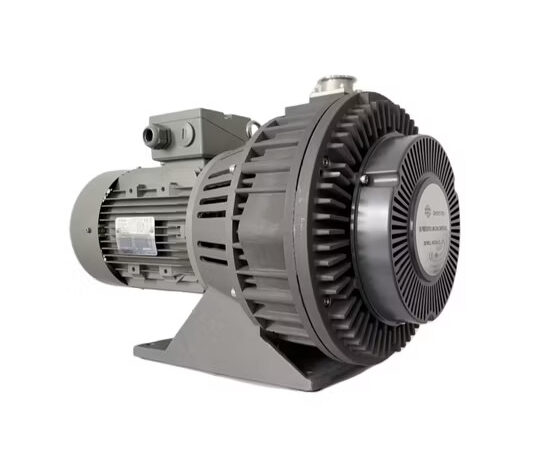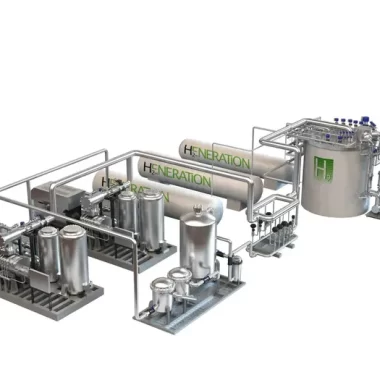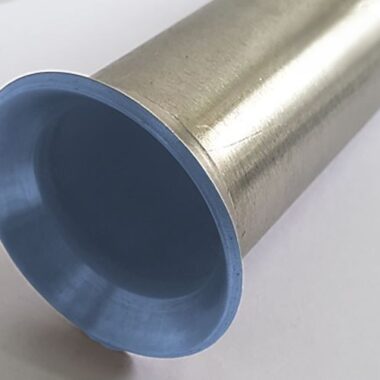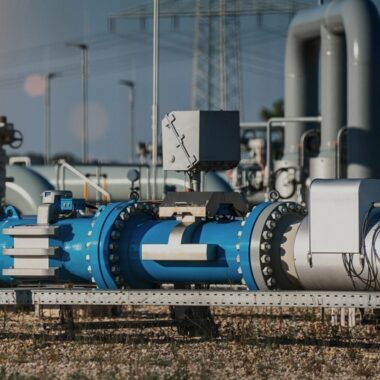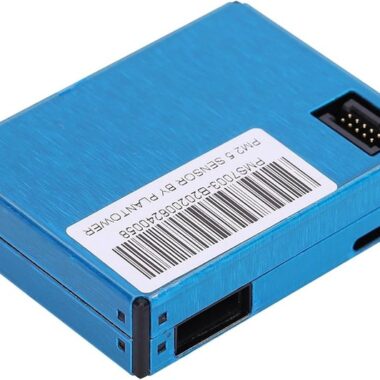Vibration-Free Compressor Parts
Introduction
Vibration-Free Compressor Parts are essential components in various industries, including HVAC, refrigeration, manufacturing, and energy production. However, excessive vibrations during operation can lead to several issues, such as mechanical wear, increased noise levels, reduced efficiency, and even system failure over time. Vibrations are typically caused by imbalances in rotating parts, misalignment, pulsations in airflow, or mechanical looseness. To address these challenges, vibration-free compressor parts are designed to enhance stability, minimize operational disturbances, and improve overall system efficiency. These components not only extend the lifespan of the compressor but also reduce maintenance costs, improve workplace safety, and optimize energy consumption. By incorporating vibration-dampening technologies, industries can achieve smoother and more reliable compressor performance, ensuring uninterrupted operation in critical applications. In this guide, we will explore various vibration-free compressor parts, their functions, and their role in enhancing compressor efficiency and longevity.
Anti-Vibration Mounts (AVMs)
Anti-vibration mounts are specially designed components made of rubber, metal, or composite materials that isolate the compressor from its mounting surface.
Functions:
- Absorb and dampen vibrations generated by the compressor, preventing them from being transferred to surrounding structures.
- Reduce operational noise by limiting the resonance between the compressor and the mounting base.
- Protect critical components, such as bearings and seals, from excessive stress, increasing their lifespan.
- Prevent the loosening of bolts and fasteners due to prolonged vibration exposure.
Common Types:
- Rubber Mounts: Absorb moderate vibrations and are used in small to medium-sized compressors.
- Spring Mounts: Provide superior vibration isolation for large industrial compressors.
- Neoprene Pads: Offer cost-effective vibration control in HVAC and refrigeration applications.
Flexible Couplings
Flexible couplings connect the motor shaft and the compressor shaft, providing a flexible link that absorbs vibrations and compensates for misalignment.
Functions:
- Reduce mechanical stress by allowing slight movement between connected shafts, preventing excessive vibration transmission.
- Compensate for minor misalignments that occur due to thermal expansion, mechanical adjustments, or assembly tolerances.
- Prevent the development of torsional vibrations that could otherwise lead to early component failure.
- Ensure smooth and efficient power transmission, reducing energy losses.
Common Types:
- Elastomeric Couplings: Use rubber-like materials to absorb shocks and vibrations.
- Gear Couplings: Suitable for high-torque applications that require enhanced vibration damping.
- Hydraulic Couplings: Use fluid-based damping mechanisms for large-scale industrial applications.
Balanced Rotors
Rotors are critical in centrifugal and rotary screw compressors. If a rotor is not properly balanced, it can generate excessive vibrations, leading to bearing and seal failure.
Functions:
- Maintain smooth and stable rotation, reducing internal friction and stress.
- Minimize unbalanced forces that could cause excessive noise and energy wastage.
- Reduce wear on compressor bearings, improving long-term performance.
- Enhance overall system efficiency by preventing unnecessary power consumption due to vibration-related inefficiencies.
Balancing Techniques:
- Static Balancing: Ensures even mass distribution across the rotor’s axis.
- Dynamic Balancing: Adjusts the rotor to maintain balance at varying speeds.
Dampening Pads (Compressor Isolation Pads)
Dampening pads, also known as compressor isolation pads, are placed beneath compressors to absorb shocks and vibrations before they can transfer to the floor or supporting structures.
Functions:
- Prevent vibrations from traveling through floors, walls, and surrounding equipment.
- Reduce noise levels by absorbing sound waves generated by the compressor’s operation.
- Improve the overall stability of the compressor by reducing movement and resonance effects.
- Minimize maintenance needs by preventing damage to mounting surfaces.
Common Types:
- Rubber-Cork Pads: Provide a combination of vibration absorption and durability.
- Neoprene Pads: Resistant to oils and chemicals, making them ideal for industrial environments.
- Steel-Reinforced Pads: Designed for high-load applications, offering enhanced durability and support.
Suspension Springs
Suspension springs are used in some compressor systems, especially in scroll and reciprocating compressors, to further isolate vibrations.
Functions:
- Absorb mechanical energy produced by moving parts, preventing vibrations from transferring to the surrounding structure.
- Maintain compressor stability by counteracting oscillations that occur during operation.
- Reduce noise levels by isolating vibration sources from the external environment.
- Increase the lifespan of compressor components by minimizing stress on bearings and joints.
Common Applications:
- Scroll Compressors: Found in high-efficiency HVAC systems.
- Reciprocating Compressors: Used in refrigeration and industrial cooling systems.
- Industrial Air Compressors: Where additional flexibility is needed for smooth operation.
Precision Bearings
Bearings are crucial for reducing friction between rotating parts, ensuring smooth motion, and minimizing vibration generation.
Functions:
- Provide support for rotating components, ensuring smooth compressor operation.
- Reduce friction, preventing heat buildup that could lead to premature failure.
- Absorb minor misalignments and mechanical stress, reducing vibration intensity.
- Improve compressor efficiency by allowing free and controlled movement of rotating parts.
Common Types:
- Ball Bearings: Used in small to medium-sized compressors for low-friction motion.
- Roller Bearings: Provide higher load capacity and durability for industrial compressors.
- Fluid-Film Bearings: Used in large-scale applications where maximum vibration damping is required.
Acoustic Enclosures
Acoustic enclosures are specially designed housings that contain the compressor to reduce noise and vibrations.
Functions:
- Significantly lower noise levels by absorbing and deflecting sound waves.
- Prevent vibrations from escaping into the surrounding environment, reducing disturbances.
- Improve workplace safety and comfort by ensuring quieter compressor operations.
- Protect the compressor from external contaminants such as dust, debris, and moisture.
Key Features:
- Made from materials with sound-absorbing properties, such as foam, steel, or composite panels.
- Equipped with ventilation systems to ensure adequate cooling.
- Customizable designs to fit different compressor models and sizes.
8. Resilient Tubing & Hoses
Flexible tubing and hoses prevent vibration transmission through refrigerant or air lines, reducing mechanical stress on the entire system.
Functions:
- Isolate vibrations at connection points to prevent stress on fittings and joints.
- Reduce the likelihood of refrigerant leaks due to mechanical stress.
- Allow for flexible installation without putting strain on rigid piping systems.
- Minimize noise levels caused by fluid flow vibrations.
Common Types:
- Rubber Hoses: Provide flexibility and vibration damping in HVAC and refrigeration systems.
- Braided Metal Hoses: Offer durability and vibration resistance for high-pressure applications.
- Teflon-Lined Hoses: Used in industrial processes requiring enhanced chemical resistance.
Benefits of Vibration-Free Compressor Parts
Extended Equipment Life
Using vibration-free components significantly reduces wear and tear on moving parts such as bearings, seals, and shafts. This leads to a longer operational lifespan for the compressor, minimizing the need for frequent repairs or part replacements.
Lower Noise Levels
By effectively isolating and absorbing vibrations, these components help reduce noise pollution in industrial and commercial settings. This is particularly important in environments where excessive noise can be disruptive or hazardous to workers.
Improved Energy Efficiency
Uncontrolled vibrations can cause energy losses due to inefficient power transmission and increased friction. With vibration-free parts, compressors operate more efficiently, leading to lower power consumption and improved overall performance.
Reduced Maintenance Costs
Since vibration-free components reduce mechanical stress and prevent premature failure of key parts, maintenance requirements are significantly lowered. This translates into cost savings, as businesses spend less on repairs and downtime.
Enhanced Stability & Safety
Stable compressor operation reduces the risk of sudden failures or structural damage. This is especially crucial in industrial settings where compressor failures could lead to costly disruptions or safety hazards.
Conclusion
Vibration-Free Compressor Parts can lead to inefficiencies, premature wear, excessive noise, and costly maintenance. To overcome these issues, specialized vibration-free components such as anti-vibration mounts, precision bearings, flexible couplings, and acoustic enclosures play a crucial role in ensuring smooth and stable compressor operation. The integration of these parts results in numerous benefits, including reduced downtime, improved energy efficiency, and an extended lifespan for the compressor system. Additionally, minimizing vibrations enhances workplace safety and reduces noise pollution, creating a more comfortable and productive environment. Investing in high-quality vibration-free compressor components is a proactive approach to preventing mechanical failures and optimizing performance. Whether used in industrial cooling, refrigeration, or HVAC systems, these parts contribute to more reliable and efficient operations. By selecting the right combination of vibration-dampening solutions, businesses can significantly enhance the durability and effectiveness of their compressor systems.


